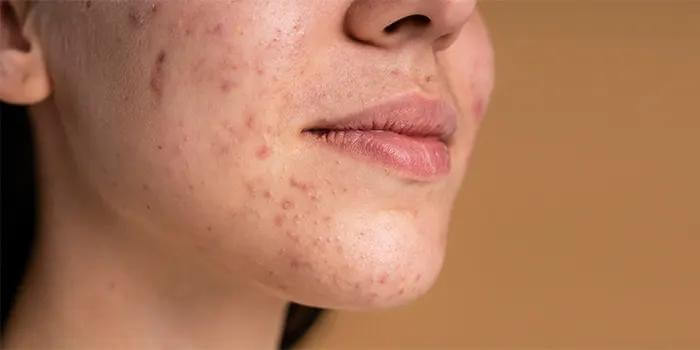Introduction
Everyone wants clear skin that glows and shines brightly. However, this is not true for many individuals. They battle with breakouts, acne, discoloration, blackheads, and lots of other skin problems. Not only does this affect their looks, but it also affects their self-esteem. Well, it doesn’t have to continue that way.
There are loads of products manufactured to treat different skin problems and improve overall skin health. However, salicylic acid is at the top of that list. Simply speaking, salicylic acid is one of acne’s biggest enemies. Within a second, you reach for a spot treatment and see a zit invading your face.
Interestingly, you could slather it on a blemish overnight and wake up in the morning with a dried pimple and much less noticeable. It’s that powerful! But there is more salicylic acid can do for the skin. Hence, in this article, we will discuss the different skin benefits of salicylic acid, the best ways to reap its benefits, the side effects, and some important things to remember before using this powerful product.
What is Salicylic Acid?
Salicylic acid, extracted from the bark of a Willow tree[1], belongs to a group known as beta hydroxy acids (BHA). Physically, it’s crystalline, lacks color and odor, and possesses a mildly bitter flavor. Salicylic acid works by shedding dead skin cells and releasing blocked pores[2]. It penetrates multiple epidermis layers while disrupting intercellular bonds responsible for cell adhesion, facilitating efficient exfoliation.
The two classes of acids in skincare products are usually beta hydroxy acids (BHAs) and alpha hydroxy acids (AHAs). The AHAs are water-soluble, while beta hydroxy acids are oil-soluble. Both help to exfoliate the skin. Oil-soluble substances penetrate through the lipid layers between the skin cells more readily and easily than water-soluble substances.
The impressive ability of this beta hydroxy acid, present in salicylic acid, provides your skin with several health benefits which we will discuss shortly. There are regulations guiding the production of salicylic acids by governing bodies like the U.S. Food and Drug Administration (FDA)[3] and the European Medicines Agency (EMA). Their purpose is to guarantee the safety and effectiveness of skincare products [4].
Let’s discuss the various benefits of salicylic acids and how to apply them to get the maximum benefits.
Health Benefits of Salicylic Acid to the Skin.
-
Helps to Get Rid of Blackheads and Whiteheads.

Blackheads and whiteheads are common skin problems many people face. Common causes of blackheads include an abnormal sloughing off of skin cells, excessive oiliness, and the action of some bacteria. Thanks to the powerful power of salicylic acid, it dissolves the skin debris that clogs the pores and causes acne.
Not only that, salicylic acid also regulates the skin cells, and due to its antibacterial activity, it is effective against cystic acne
[5]
.
2.
Helps to Exfoliate.

Usually, the skin undergoes a process of renewal that involves shedding off old cells
[6]
. This takes between 28-40 days, although it may vary from person to person. If this doesn’t happen regularly, it could result in the skin becoming dull and pale.
Also, as we age our skin gets old, promoting delayed skin cell turnover
[7]
, resulting in roughness, and that’s not good for you. Luckily, salicylic acid, being a keratolytic agent, helps to scrape off the old and dead cells on your skin
[5]
.
Salicylic acid also loosens and breaks apart desmosomes (attachments between cells in the outer layer of skin, which encourages unplugging of pores and ultimately, helps to exfoliate.
3.
Helps to Treat Acne.

Salicylic acid is a great option for the treatment of acne. Its remarkable capacity to deeply penetrate the skin and effectively exfoliate the pores aids in their unclogging resulting in a noteworthy reduction of blackheads, whiteheads, and pimples
[8]
.
It also possesses anti-inflammatory properties that contribute to alleviating redness and inflammation typically linked with acne breakouts.
4.
Good for Treating Psoriasis and Dandruff.

Incorporating salicylic acid into their treatment regimens may be the best option for individuals struggling with psoriasis or dandruff. The exfoliating properties of salicylic prove effective at diminishing scale and flake accumulation[9], ultimately providing respite from discomfort while visibly enhancing affected areas.
5.
Skin Texture Improvement.

Finally, salicylic acid helps to tighten the structure of the skin and makes it look firmer and nicer. Moreso, it enhances the skin’s texture by reducing roughness and unevenness. All of this improves the integrity of the skin and leaves you with supple and vibrant skin
[10]
.
Apparently, salicylic acid is your go-to option for optimal skin health. However, salicylic acid can also be really dangerous if is not used properly. Hence, ensure you pay more attention to the rest of this article.
Essential Things to Know and How To Use Salicylic Acid For Skin Benefits.
Now that we’ve seen how beneficial salicylic acid can be to your skin health, let’s consider how best to use this essential product. It is important we talk about this because, as beneficial as salicylic acid can be, it can also precipitate some unappealing results if used wrongly.
❖ To start with, topical salicylic acid comes as a cloth (a pad or wipe used to cleanse the skin), cream, lotion, liquid, gel, ointment, shampoo, wipe, pad, and patch to apply to the skin or scalp. Also, this topical cream comes in several strengths, including certain products only available with a prescription.
❖ Depending on the treated condition and the product used, topical salicylic acid may be used as often as several times a day, a few, or several times a week. Follow the directions on the package or prescription label carefully.
❖ However, seek recommendations from a doctor or pharmacist for directions on the proper use and storage of prescription creams.

❖ Also, note that when treating acne with topical salicylic acid, your skin might initially experience dryness or irritation. However, this will gradually dissipate over time. To prevent such discomfort, you may start by using the product less frequently and then gradually increase the frequency as your skin adjusts to the medication.
❖ In addition, during your treatment, you may encounter dryness or irritation; if this occurs, reduce your application frequency. This may also occur as a result of sensitivity to the medication. Hence, consult a healthcare professional or check the package label for further guidance.
❖ The vital thing to know about using salicylic acid is to apply a small amount of the product to small areas during the first few days of treatment; if no discomfort or reaction occurs, you can increase the amount or frequency of use, as stated on the label.
❖ Do not ingest or swallow topical salicylic acid. At the same time, care should be taken to prevent contact with the eyes or nose. In case of contact with these areas, flush thoroughly with water for fifteen minutes.
❖ Also, unless advised by a medical practitioner, do not apply topical salicylic acid on large areas of your body, and do not cover them with bandages or dressings.
❖ Do not apply topical salicylic acid to broken, red, swollen, irritated, or infected skin.
❖ You may not get clear skin after a single application of topical salicylic acid. It may take several weeks or longer to feel the full benefit of the medication, especially in treating acne or certain other skin conditions.
❖ Also, your condition may appear to worsen during the first few days of treatment as your skin adjusts to the medication. It will get better with time. Just ensure you are consistent with the product.
❖ Inform your doctor if you are pregnant, plan to become pregnant, or are breastfeeding. If you become pregnant while using topical salicylic acid, inform your doctor immediately.
❖ Salicylic acid is contraindicated in some medications and herbal preparations. Hence, inform your physician of any prescription and nonprescription medications, such as vitamins, nutritional supplements, and herbal products you currently use or intend to use.
[11]
❖ It is essential to tell your doctor if you are taking aspirin, diuretics (commonly known as ‘water pills’), or any products containing methyl salicylate. This will help them adjust their medication doses or closely monitor them for potential side effects.
These are essential things to note before starting to use salicylic acid. Let’s briefly consider some risks and side effects.
Risks and Health Benefits

As said earlier, salicylic acid offers impressive health benefits but can also negatively affect skin. It may not be for you if you have sensitive skin or skin prone to dryness and irritation.
[12]
And if you must use it, it should not be frequent.
Also, some recorded side effects of salicylic acid are;
❖ Irritation,
❖ Light-headedness,
❖ Swelling of your face, lips, tongue, or throat,
❖ Dryness,
❖ Itching, Peeling, and
❖ Redness.
These can become very pronounced with prolonged or overuse. In addition, because of the small size of salicylic acid, it can easily penetrate the skin and get absorbed into the bloodstream.
Hence, it should not be used on broken skin/cuts, moles, birthmarks, warts with hair growing from them, or genital/anal warts. It should be avoided by pregnant women and anyone taking blood-thinning medications.
Stop using this medicine and get emergency medical help if you have signs of an allergic reaction: hives, itching; difficulty breathing, feeling light-headed; swelling of your face, lips, tongue, or throat.
Also, stop using salicylic acid topical and call your doctor at once if you begin to notice any of the following:
❖ Severe headache,
❖ ringing in your ears,
❖ problems with hearing, severe stomach pain, and shortness of breath.
Conclusion
Salicylic acid is a highly impressive substance with numerous benefits for the skin. It has the remarkable ability to exfoliate the skin, effectively treat acne and significantly improve skin texture. Because of these qualities, it has become incredibly popular in skincare products.
However, it is of utmost importance to use salicylic acid in moderation and diligently adhere to the instructions and recommendations from your health practitioners to avoid potential side effects.
If you notice any of the side effects discussed above, you may want to reduce the frequency of application if they are minor. However, if the side effects are getting intense, seeking guidance from a dermatologist on the next line of action is advisable.
Also, before incorporating salicylic acid into your skincare routine, ensure you get the go-ahead from your doctor. Ensure all of this, and you will experience the immense power of salicylic acid in achieving healthier and clearer skin.
References.
1. Norn, S., Permin, H., Kruse, P. R., & Kruse, E. (2009). Fra pilebark til acetylsalicylsyre [From willow bark to acetylsalicylic acid]. Dansk medicinhistorisk arbog, 37, 79–98.
2.https://www.glamourmagazine.co.uk/gallery/salicylic-acid
3.https://www.accessdata.fda.gov/scripts/cdrh/cfdocs/cfcfr/cfrsearch.cfm?fr=343.80
4. Hayat, S., Irfan, M., Wani, A., Nasser, A., & Ahmad, A. (2012). Salicylic acids: Local, systemic or inter-systemic regulators? Plant Signaling & Behavior, 7(1), 93-102.https://doi.org/10.4161/psb.7.1.18620
5. Arif, T. (2015). Salicylic acid as a peeling agent: A comprehensive review. Clinical, Cosmetic and Investigational Dermatology, 8, 455-461.https://doi.org/10.2147/CCID.S84765
6. Alberts B, Johnson A, Lewis J, et al. Molecular Biology of the Cell. 4th edition. New York: Garland Science; 2002. Epidermis and Its Renewal by Stem Cells. Available from: https://www.ncbi.nlm.nih.gov/books/NBK26865/
7. Farage, M. A., Miller, K. W., Elsner, P., & Maibach, H. I. (2013). Characteristics of the Aging Skin. Advances in Wound Care, 2(1), 5-10. https://doi.org/10.1089/wound.2011.0356
8. Bettoli, V., Micali, G., Monfrecola, G., & Veraldi, S. (2020). Effectiveness of a combination of salicylic acid-based products for the treatment of mild comedonal-papular acne: a multicenter prospective observational study. Giornale italiano di dermatologia e venereologia : organo ufficiale, Societa italiana di dermatologia e sifilografia, 155(6), 744–748. https://doi.org/10.23736/S0392-0488.20.06751-6
9. Ranganathan, S., & Mukhopadhyay, T. (2010). DANDRUFF: THE MOST COMMERCIALLY EXPLOITED SKIN DISEASE. Indian Journal of Dermatology, 55(2), 130-134. https://doi.org/10.4103/0019-5154.62734
10. Zhao, Q., Dai, C., Fan, S., Lv, J., & Nie, L. (2016). Synergistic efficacy of salicylic acid with a penetration enhancer on human skin monitored by OCT and diffuse reflectance spectroscopy. Scientific Reports, 6. https://doi.org/10.1038/srep34954
11. Arif H, Aggarwal S. Salicylic Acid (Aspirin) [Updated 2023 Apr 8]. In: StatPearls [Internet]. Treasure Island (FL): StatPearls Publishing; 2023 Jan-. Available from: https://www.ncbi.nlm.nih.gov/books/NBK519032/
12. Liu, H., Yu, H., Xia, J., Liu, L., Liu, G. J., Sang, H., & Peinemann, F. (2020). Topical azelaic acid, salicylic acid, nicotinamide, sulfur, zinc, and fruit acid (alpha‐hydroxy acid) for acne. The Cochrane Database of Systematic Reviews, 2020(5). https://doi.org/10.1002/14651858.CD011368.pub2

 By myulikeadmin
By myulikeadmin



